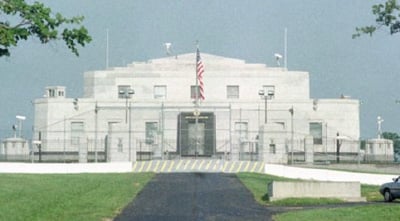(Matthew Cortez, Sound Money Defense League) Inflation is pernicious and widespread – silently siphoning the purchasing power of the U.S. Federal Reserve note “dollar” from the savings of the American people year after year.
Meanwhile, central banks all over the globe – from Saudi Arabia to China to Egypt and beyond – are buying gold at breakneck pace. Some global banks, including the BRICS nations (Brazil, Russia, India, China, South Africa), are even considering a non-dollar alternative to the Federal Reserve note for global trade settlement.
As geopolitical uncertainty increases, precious metals have gained renewed attention; savers, savvy investors, businesses, and even state treasurers are taking more steps toward protecting their savings from inflationary pressures by purchasing gold and other precious metals.

According to recent reports, the United States gold reserves presently total 8,133 metric tons, much of it stored in the United States Bullion Depository situated within Fort Knox, Kentucky. This vault, and the gold stored inside it, have long been a symbol of America’s monetary might and global status.
However, despite these claims, U.S. gold reserves haven’t received a credible inspection since 1974, shortly after America’s breach of the Bretton Woods agreement raised concerns about America’s gold holdings. In fact, audits conducted prior to 1974 were not credible either.
Today is the 50-year anniversary of this public relations stunt. The nagging question remains: Is all of America’s gold still there?
History of the United States Bullion Depository
Constructed in 1936 to support Executive Order 6102, a Roosevelt-imposed mandate on Americans to turn over their gold in exchange for unbacked paper money, the United States Bullion Depository, commonly referred to as Fort Knox, was introduced as the nation’s primary gold vault.
Located in Kentucky, the U.S. Bullion Depository is situated at the interior of the continent, intentionally far from any coastlines, to ensure the gold is safe in the case of any assaults or invasions.
Equipped with a 21-inch vault door and 1,420 tons of steel, the security features of Fort Knox were specifically designed for storage of millions of ounces of gold (mostly in bar form, often created from melted coins) that had been extracted from U.S. citizens and institutions by President Roosevelt’s infamous order, and the massive amounts of gold that were imported into the U.S. to isolate it from war-torn Europe.
While the vault was touted to be impenetrable, Americans began to wonder about the gold supposedly held inside the depository’s secure chambers.
Theories circulated about the state, condition, and ownership of the metals, but one particular theory was from a Washington attorney in an interview with The National Tattler, claiming that 20 billion dollars’ worth of gold had suddenly gone missing from the depository. These rumors quickly spread to Congress.
Americans remained skeptical of the depository, speculating that the gold reserve had been depleted, used to pay debts, or shipped elsewhere over the years.
The “Show Audit” of Fort Knox Gold in 1974 Created More Questions
To ease these concerns, on September 23, 1974, the U.S. Treasury opened just one of its 15 Fort Knox vault compartments to politicians and reporters to view the gold and confirm its existence.
For about two hours multiple film and camera crews and smiling politicians filed into a hallway for the chance to hold a gold bar and peek into a room full of gold stacked up to the ceiling.
On their way out, each visitor had to pass by a metal inspector to ensure that none of the gold bars were being snuck out in the process.
Notably, throughout the visit, none of the bars being passed around were matched to a serial number, assayed or tested for purity, or even verified as part of United States’ holdings. (Foreign countries have at times stored gold there as well.)
It seems the made-for-TV spectacle in 1974 was more of a pep-rally than any credible proof of what the amount of U.S. gold purported to be in those vaults.
Decades later, speculation continues. As the Federal Reserve note continues to falter and central banks all over the world continue to stockpile gold, Americans deserve to know the truth about America’s gold holdings.
In 2021, Rep. Alex Mooney, R-W.Va., introduced legislation to audit America’s gold holdings. The bill called for a full assay, inventory, and audit of all US gold holdings, along with a full accounting of all gold transactions in which the U.S. has engaged. (No action was been taken on this bill, but it may be reintroduced next year.)
Matthew Cortez is a policy assistant for the Sound Money Defense League.

